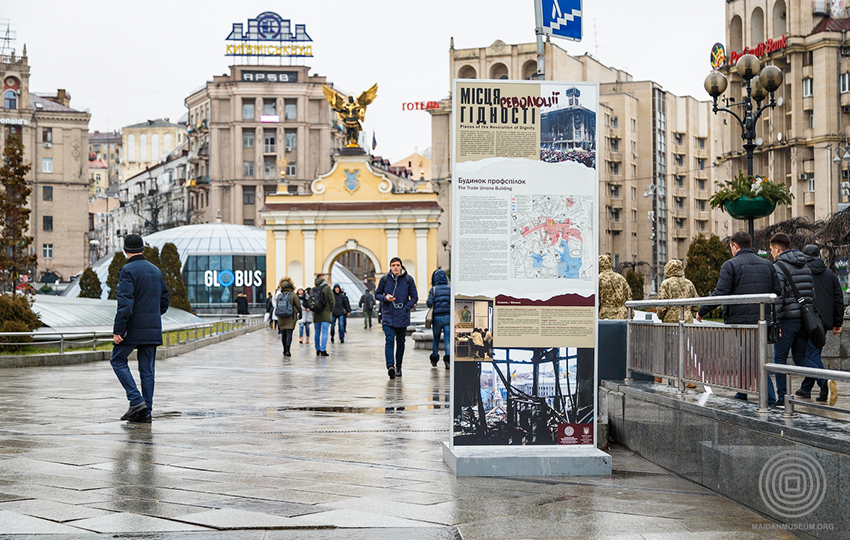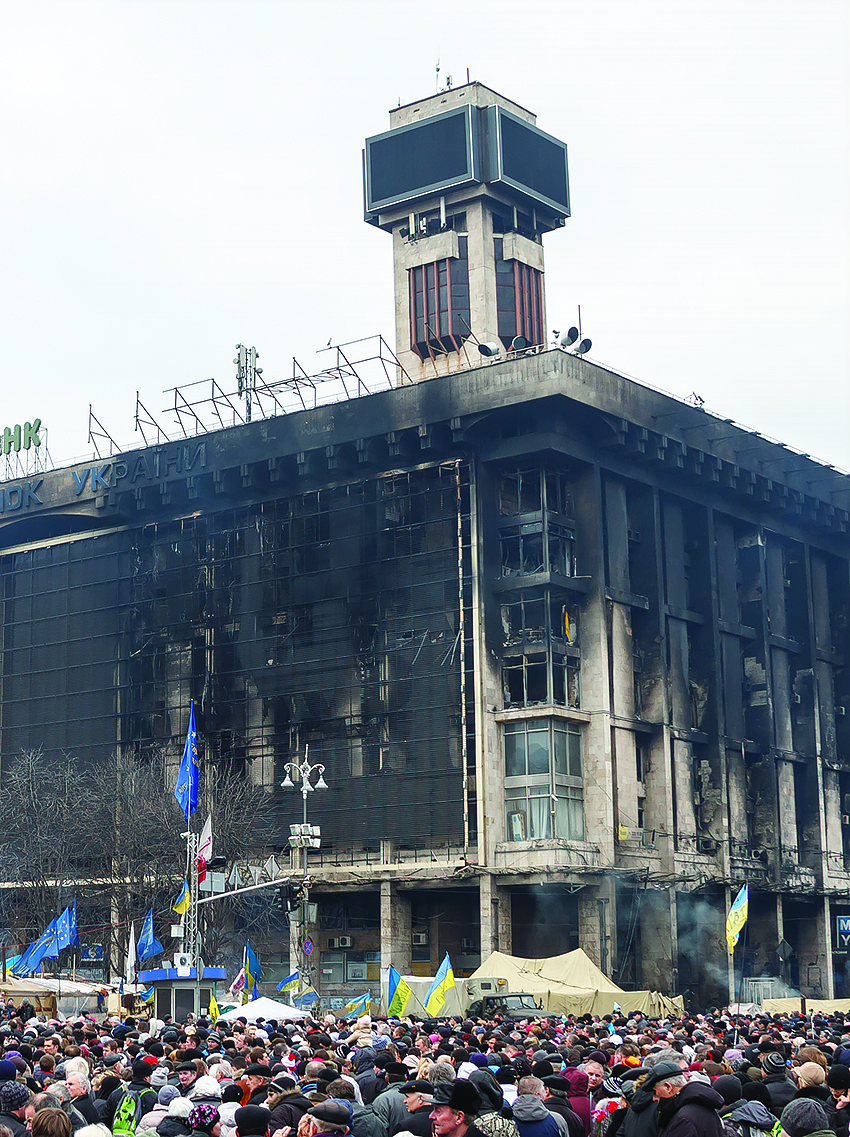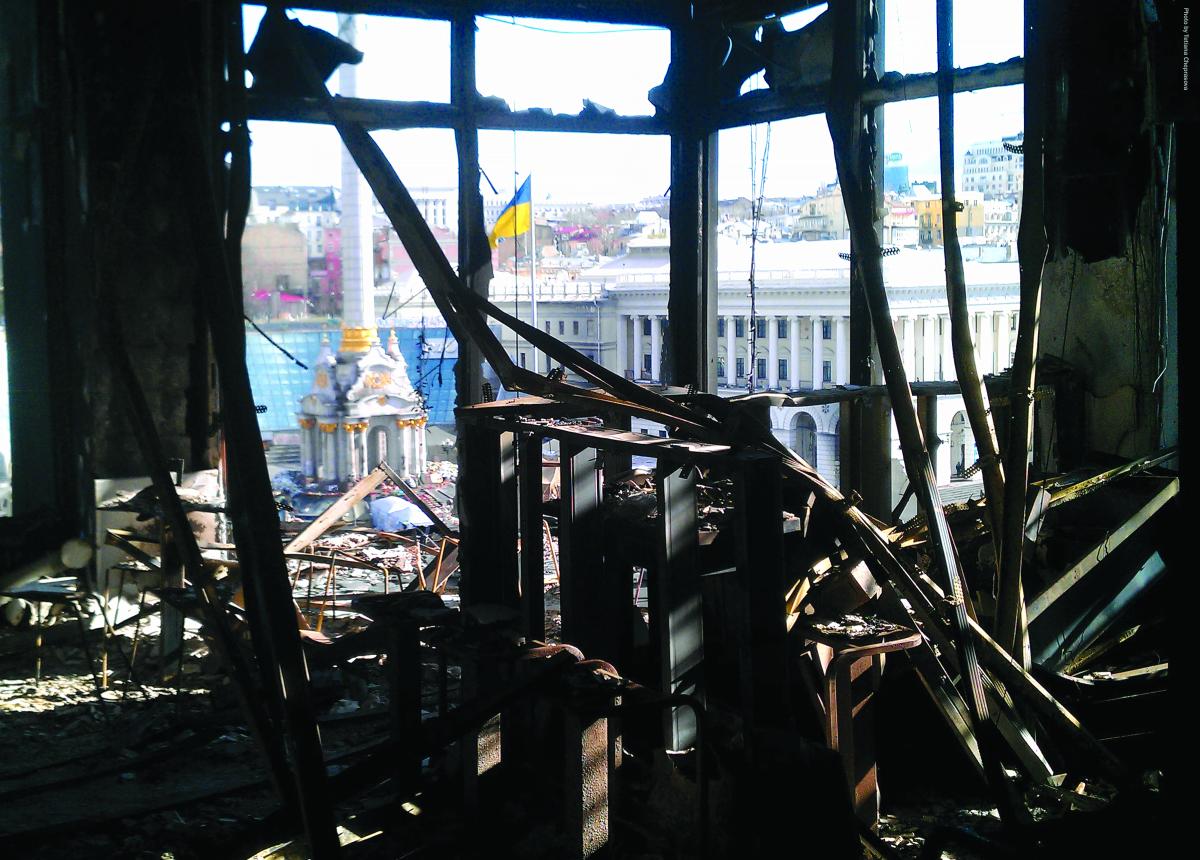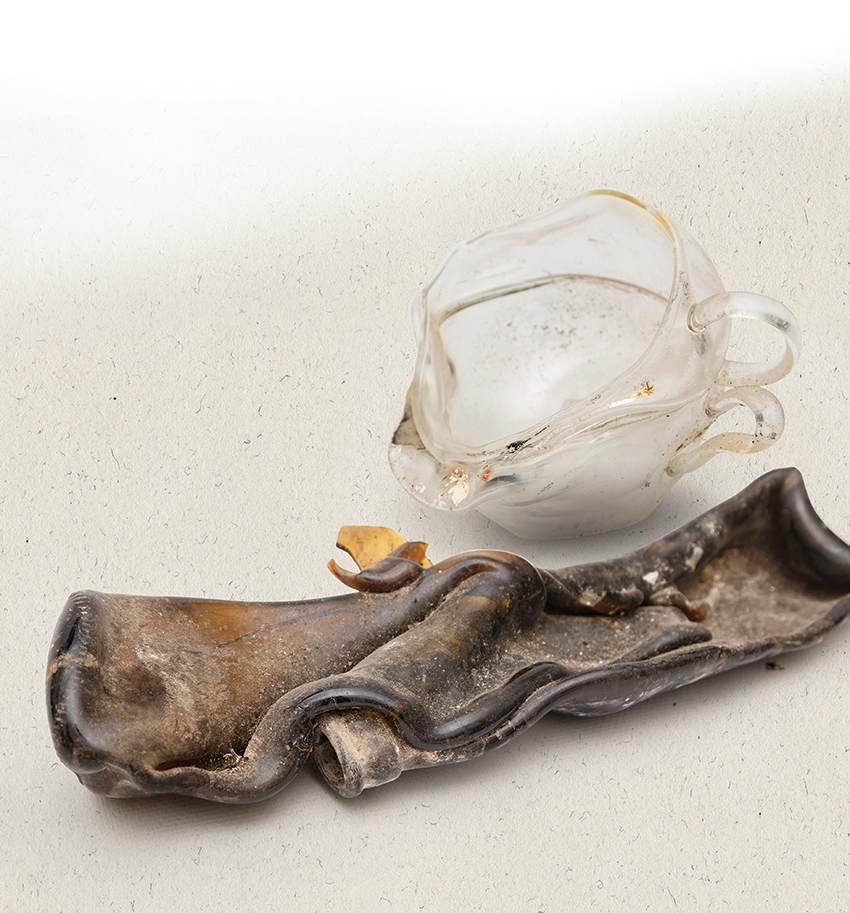The information and navigation system "Places of the Revolution of Dignity" is a network of stands that introduce the history and significance of individual locations of Euromaidan.
 Trade Union building
Trade Union building
A new building for trade unions was constructed in 1980. During the Orange Revolution in 2004, the House of Trade Unions hosted the protesters' headquarters. On December 1, 2013, during the first crowded march against the Viktor Yanukovych's government, the building became a place for the National Resistance Headquarters. In addition, the House of Trade Unions hosted a kitchen, the main hospital, a station for dropping off and collecting warm clothes, and a press center. Many foreign journalists worked from here. A medical center and a place for self-defense members to sleep were on the upper floors. After midnight on February 19, a fire broke out on the upper floors of the Trade Union Building. At that time, the servicemen of the Internal Troops, Berkut, and the Security Service of Ukraine were trying to storm the Maidan. The wounded were evacuated to St. Michael's Cathedral. Two people died that night on the seventh and second floors: 25-year-old Oleksandr Klytinsky and 58-year-old Volodymyr Topiy. According to the Main Directorate of the State Emergency Service in Kyiv, employees of the State Emergency Service of Ukraine managed to rescue 41 people during the fire in the capital's House of Trade Unions. According to the Verkhovna Rada's provisional investigative commission into the Maidan killings, several people were responsible for the storming of the Trade Union Building. Then Head of the Security Service of Ukraine, Oleksandr Yakymenko, his first deputy, Volodymyr Totsky, Head of the Alpha Special Operations Center, Oleh Prysiazhnyi, and the Head of the Security Service's Anti-Terrorist Center, Andrii Merkulov are responsible for orders of that night. During the storming on February 19, a curtain of fire formed a line from the House of Trade Unions to the monument to the founders of Kyiv, the Independence Monument, and the Conservatory. This fire protected protesters from the aimed shots of security forces.

Participants accounts
Medics were still bandaging people when the second floor of the House of Trade Unions caught on fire. Men from security opened windows to let out the smoke. Berkut was already there. They brought in one of the Berkut snipers. His face was heavily wounded. He was directly hit with fireworks. I offered to give him a pressure bandage and call an ambulance. We could've left him in the House of Trade Unions. He was so shell-shocked that he wouldn't be able to make it out by himself and would burn with the building. I understood that we were helping the enemy. I felt almost like a traitor to the Revolution.
Taras Semushchak, coordinator of the medical center
I've been to Ukraine many times before. Every single time I would be annoyed by remnants of the Soviet Union scattered around in various forms. Same situation in Poland. I saw different Ukraine on the Maidan. That Ukraine was friendly and kind. The great Ukrainian culture finally came through. The previous governmental system didn't allow for Ukrainian values to be the main governmental values. And this discovery of new Ukraine was such a... positive shock for me.
Pawel Bobolowicz, Polish journalist
In general, the Press Center was a space for people who believed. I shared the table with people from diaspora from various countries. Sometimes they knew very little Ukrainian, but it didn't stand in the way of communication. If you leave your equipment, like a laptop or camera, you can be sure that you will find it in the same spot. We believed in love and unity, and that people on the Maidan, just like us, want to live in Ukraine with dignity. There are no words to describe those feelings.
Tatiana Motsak, environmentalist, journalist

Exhibits from the National Museum of the Revolution of Dignity
Items from the burned House of Trade Unions
At the end of February, members of the Eighth Hundred of Self-Defense and the Artel Maidan organization made an expedition to the burned House of Trade Unions to find items that would convey the essence of the tragedy. The initiator of the expedition, artist Tetiana Cheprasova, and a dozen activists found many things crucial for preserving the memory of those events and organizing thematic exhibitions. These melted ceramic cups, glass bottles, and many other items testify to the extremely high temperature in the rooms. Rooms were crowded at the time of the fire. In December 2017, Tetiana Cheprasova gifted the collection of items from the House of Trade Unions to the National Museum of the Revolution of Dignity. Shortly before that, the administration of the House of Trade Unions had donated fragments of the building's fire-damaged stone staircase to the museum's collections.

More items from the Maidan are available on the Museum's website in the COLLECTION section.
Photos by Bohdan Poshyvailo and Tetiana Cheprasova
